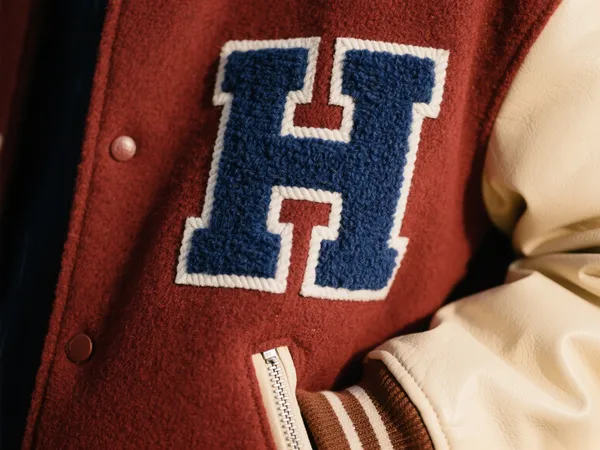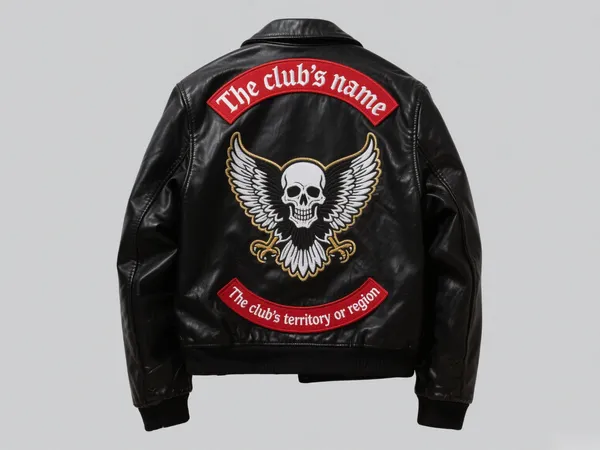Nel mondo degli accessori tessili e del fashion branding, toppe adesive in pelle sono ampiamente utilizzati per il loro aspetto elegante e le applicazioni versatili. Uno dei materiali più comunemente utilizzati per queste patch è Pelle PU (pelle sintetica in poliuretano), grazie alla sua consistenza liscia, all'ampia gamma di colori e al rapporto qualità-prezzo. Tuttavia, prima di scegliere la pelle PU per la vostra toppa adesiva o per il vostro progetto di accessori moda, è essenziale comprenderne le prestazioni pratiche, in particolare rischi di durabilità e invecchiamento.
Questo articolo esplora le caratteristiche principali della pelle PU e offre consigli pratici su come utilizzare correttamente le toppe in pelle PU nello sviluppo dei prodotti.

📌 Cos'è la pelle PU?
La pelle PU è un tipo di pelle sintetica creata applicando un rivestimento in poliuretano su una base in tessuto, come tessuto non tessuto o poliestere. Questo materiale è progettato per imitare l'aspetto e la sensazione della vera pelle, ma con un processo produttivo più sostenibile ed economico.
Grazie a queste caratteristiche, la pelle PU viene spesso utilizzata in:
- Toppe adesive in pelle con marchio per abbigliamento
- Strisce e finiture decorative su scarpe e borse
- Accessori per attrezzature sportive e prodotti creativi culturali
Dal punto di vista del design, la pelle PU offre un eccellente impatto visivo. Tuttavia, la sfida sta nel riuscire a mantenere a lungo questo aspetto.
⚠️ I rischi nascosti della pelle PU: breve durata e invecchiamento
Sebbene la pelle PU possa sembrare inizialmente fantastica, molti utenti sopravvalutarne la durataCiò è particolarmente problematico per applicazioni ad alto utilizzo, come articoli di moda o toppe che vengono sottoposti a frequenti lavaggi o all'esposizione all'aria aperta.
⏳ Durata normale: solo 1–2 anni
A differenza della vera pelle o della microfibra, la pelle PU non ha una struttura di supporto in fibre naturali. Si affida esclusivamente al suo rivestimento in poliuretano, che è soggetto a ossidazione, indurimento o sfaldamento col tempo.
🌡 Sensibile alle condizioni di conservazione
L'invecchiamento della pelle sintetica è accelerato da:
- Temperature e umidità elevate durante lo stoccaggio
- Esposizione alla luce solare diretta
- Contatto con sostanze acide o alcaline
- Pressione costante o piegatura
Tutti questi fattori possono causare screpolature, appiccicosità, formazione di bolle o desquamazione della superficie—segni comuni di invecchiamento nei materiali PU.

👕 Perché la pelle PU sta perdendo popolarità nel settore dell'abbigliamento
Per i marchi di abbigliamento, in particolare per capispalla, abbigliamento per bambini e abbigliamento sportivo, la scelta dei materiali è fondamentale. I prodotti devono soddisfare gli standard di durata, lavabilità e sicurezzaPurtroppo, la pelle PU spesso non è all'altezza di questi requisiti.
I produttori di abbigliamento stanno sempre più abbandonando le toppe in PU a causa dei frequenti reclami dei consumatori:
"La macchia ha iniziato a staccarsi dopo solo pochi lavaggi."
"È invecchiato in magazzino prima ancora che lo spedissimo."
Tali problemi non solo aumentano i costi post-vendita, ma danneggiano anche la reputazione di un marchio.
✅ Buone pratiche per l'utilizzo di toppe adesive in pelle PU
Se il tuo progetto richiede la pelle PU, per motivi di budget o di design, ecco come puoi usarla saggiamente:
- Controllare la durata del prodotto
Mantenere le aspettative sul prodotto entro un periodo di 6-12 mesi. La pelle PU non è adatta per utilizzi a lungo termine o di fascia alta. - Ottimizzare lo storage
Conservare le patch in asciutto, ventilato e ombreggiato ambienti. Evitare di impilarli, piegarli o lasciarli in aree ad alta temperatura. - Aggiungi etichettatura chiara
Informare gli utenti finali che le toppe in pelle PU non devono essere lavate in lavatrice, stirate ad alte temperature o esposte alla luce solare. - Considerare alternative per un uso più lungo
Se il tuo budget lo consente, valuta di passare a microfibra o vera pelle per cerotti adesivi. Questi materiali offrono una durata di 3-10 anni e sono molto più stabili. - Evitare la sovrapproduzione
Non produrre patch in PU in grandi quantità troppo presto. La conservazione prolungata aumenta il rischio di invecchiamento prima della consegna del prodotto.

📝 Conclusione: abbinare il materiale alla missione
While Toppe adesive in pelle PU sono attraenti ed economici, ma non sono adatti a tutti. La loro breve durata e la suscettibilità ai danni ambientali li rendono più adatti per articoli di fast fashion, per uso temporaneo o promozionali—non prodotti di alto valore e a lungo termine.
Scegliere il materiale giusto non è solo una questione estetica. Comprendendo i limiti della pelle PU, è possibile stabilire aspettative realistiche ed evitare costosi problemi post-vendita.
Se stai valutando le opzioni di pelle PU per la tua prossima linea di prodotti, non esitare a contattarci. Offriamo servizi di campionatura e consulenza esperta sui materiali per aiutarti a selezionare il pelle sintetica più affidabile for your needs.
💬 Hai riscontrato problemi di invecchiamento con la pelle PU nei tuoi progetti? Preferisci la pelle sintetica, la microfibra o la vera pelle? Lascia un commento qui sotto: ci piacerebbe conoscere le tue esperienze e condividere consigli su come trovare la toppa adesiva in pelle più adatta alle tue esigenze.



